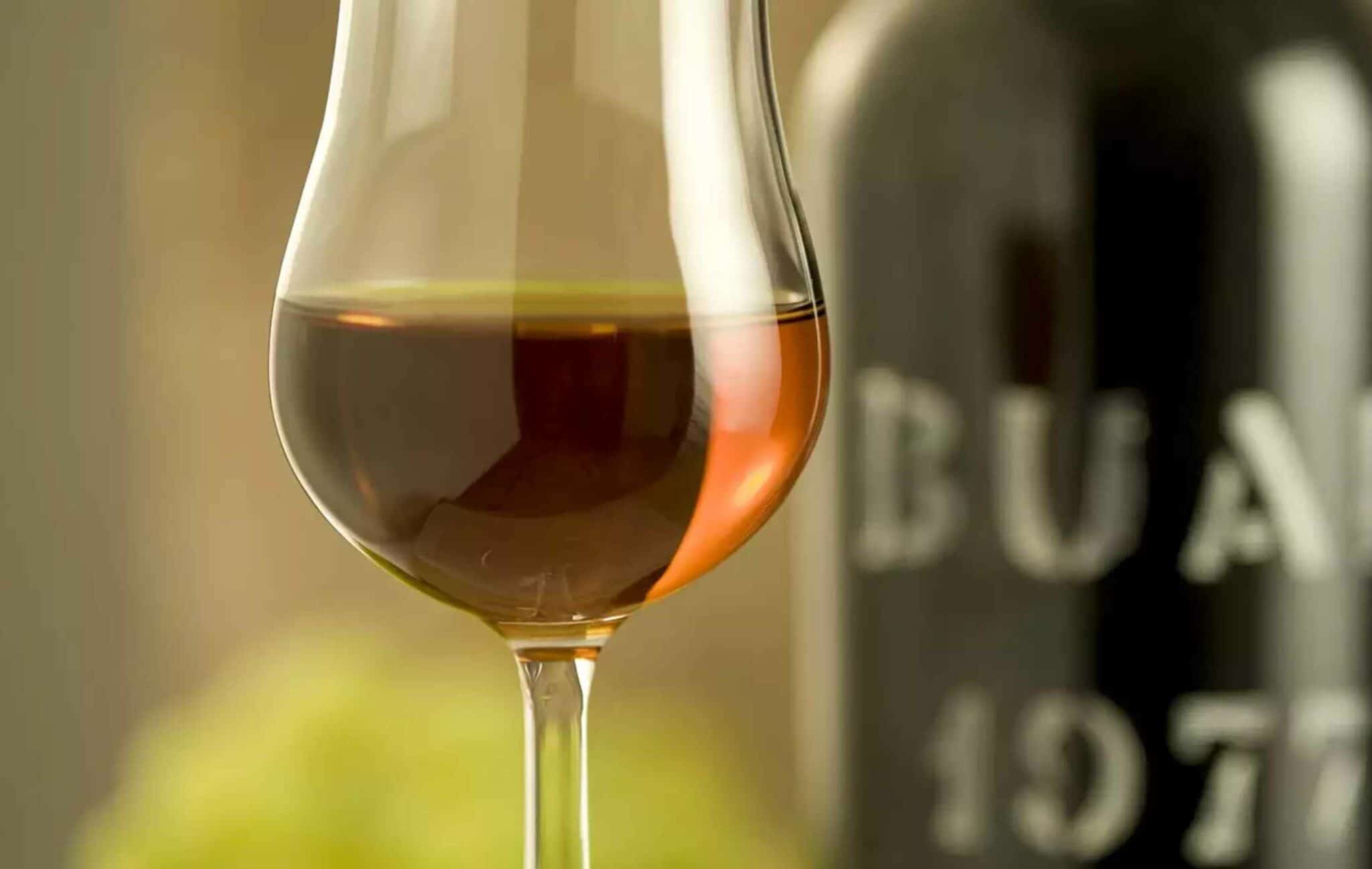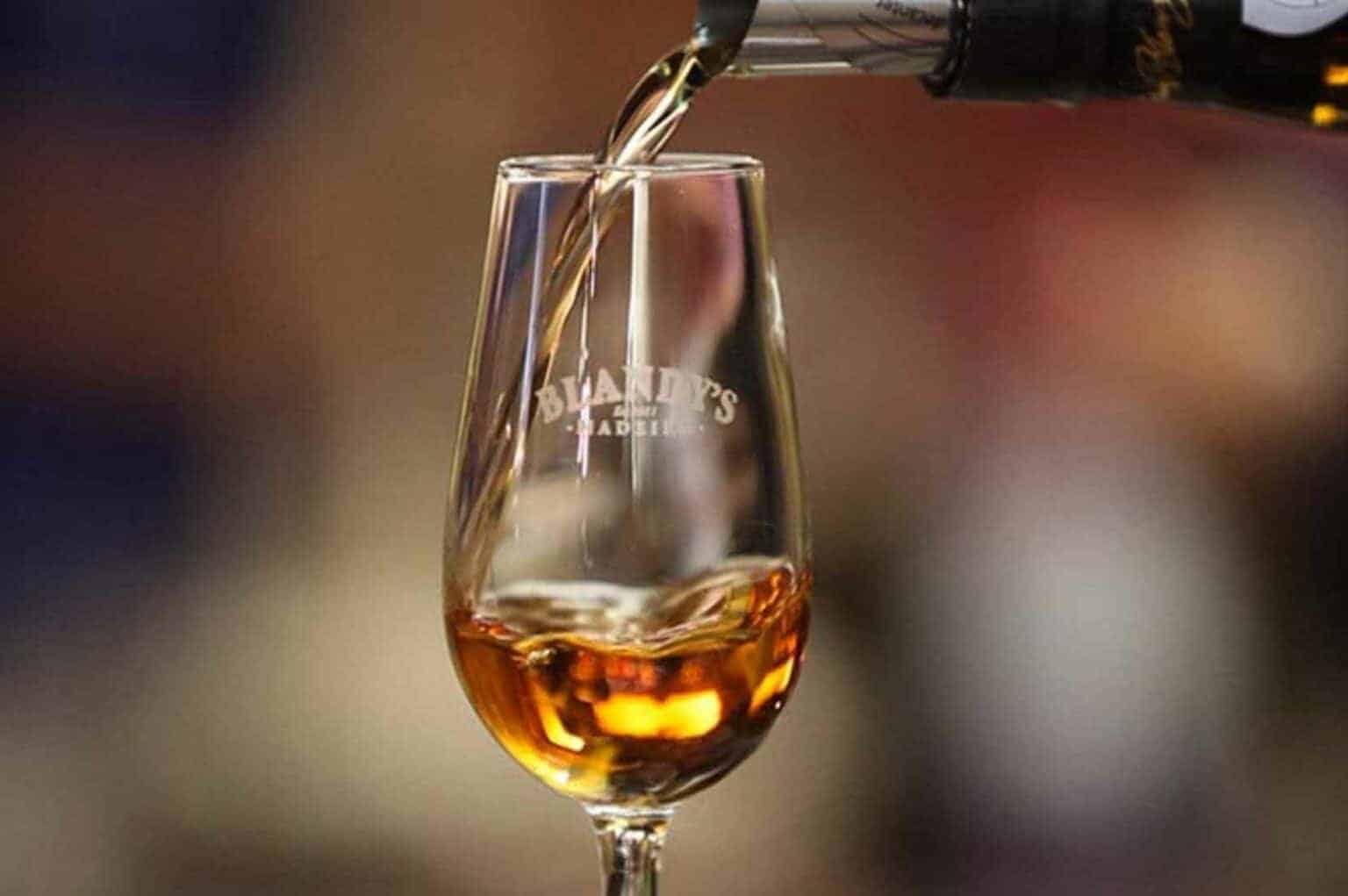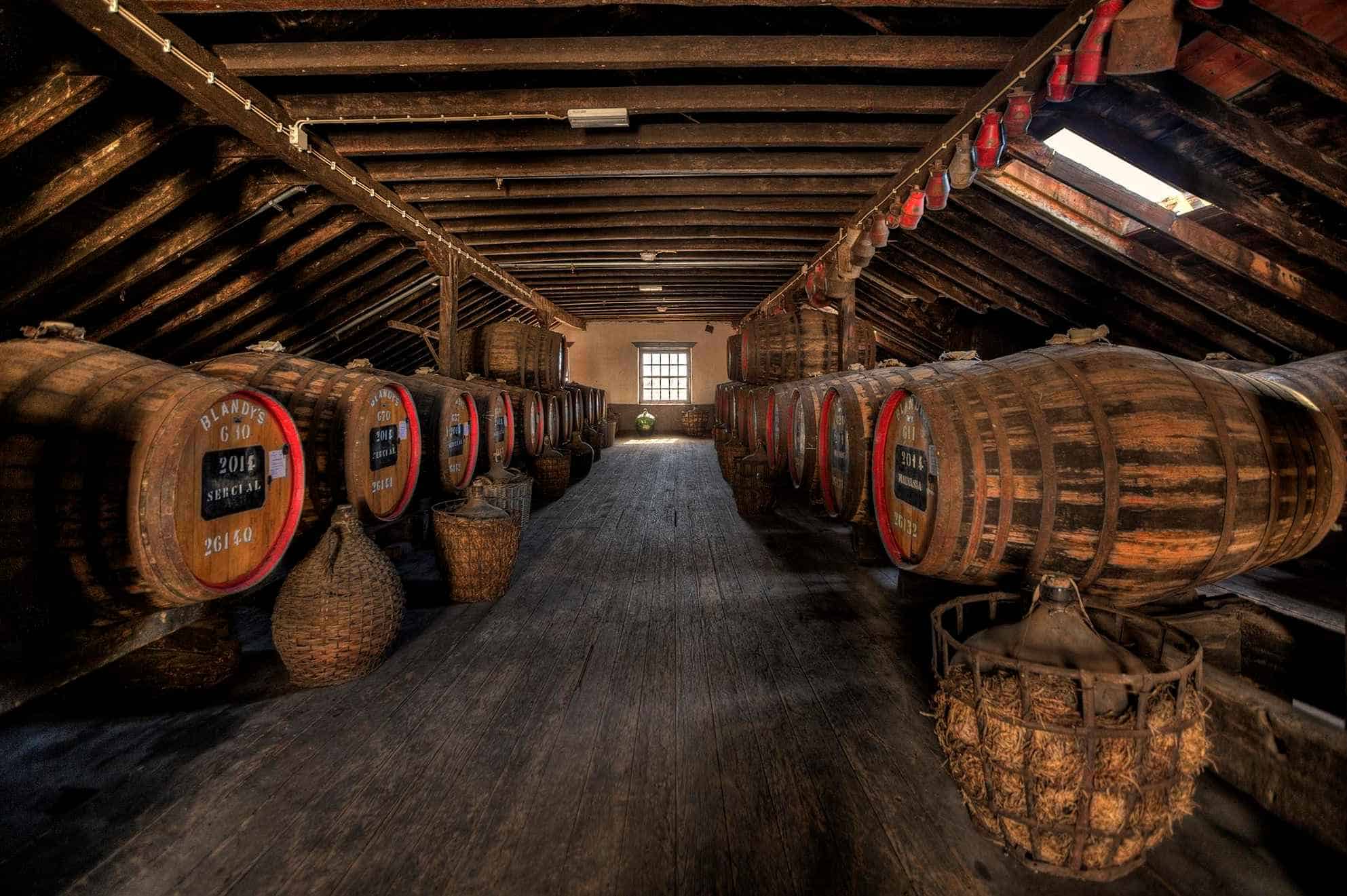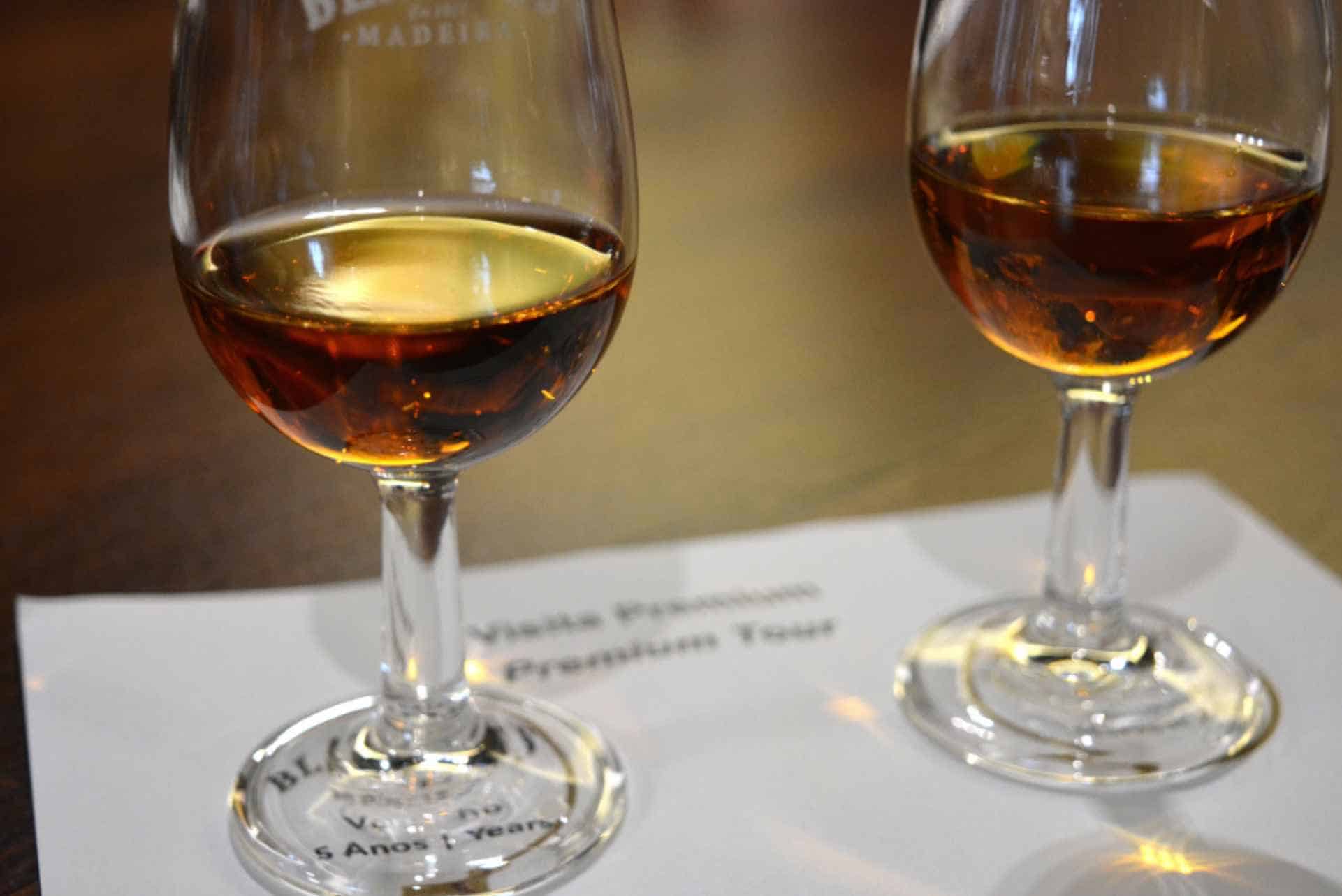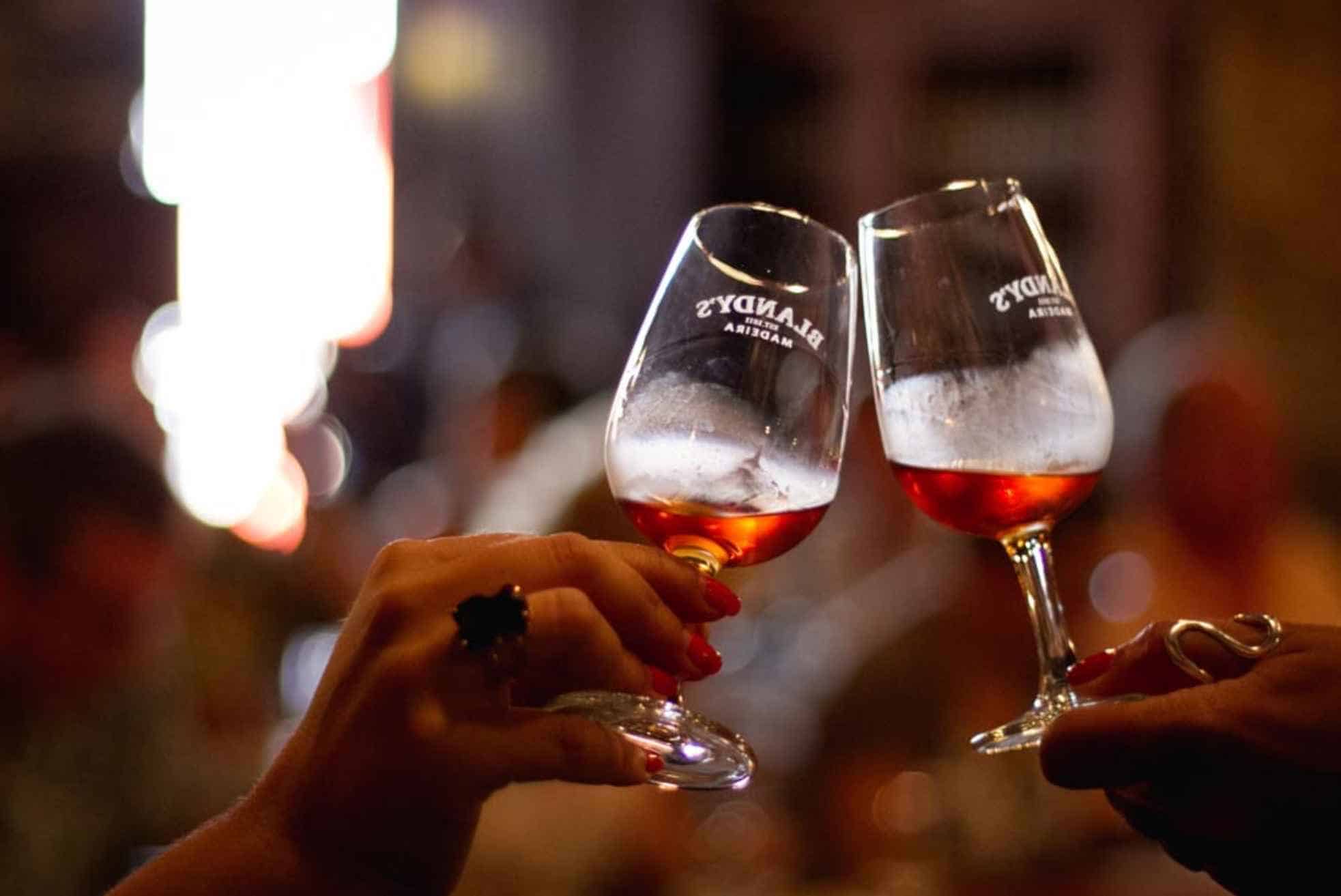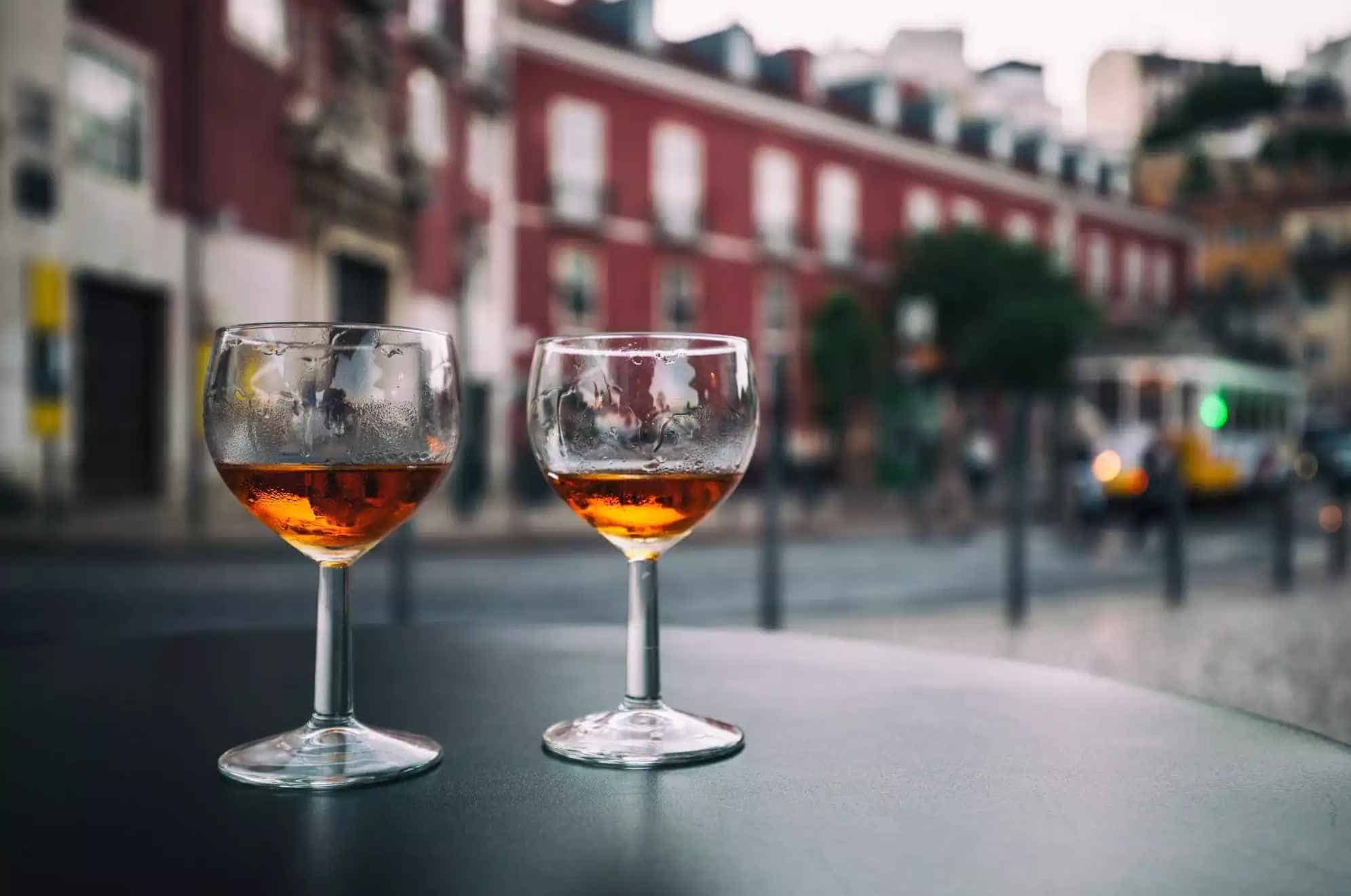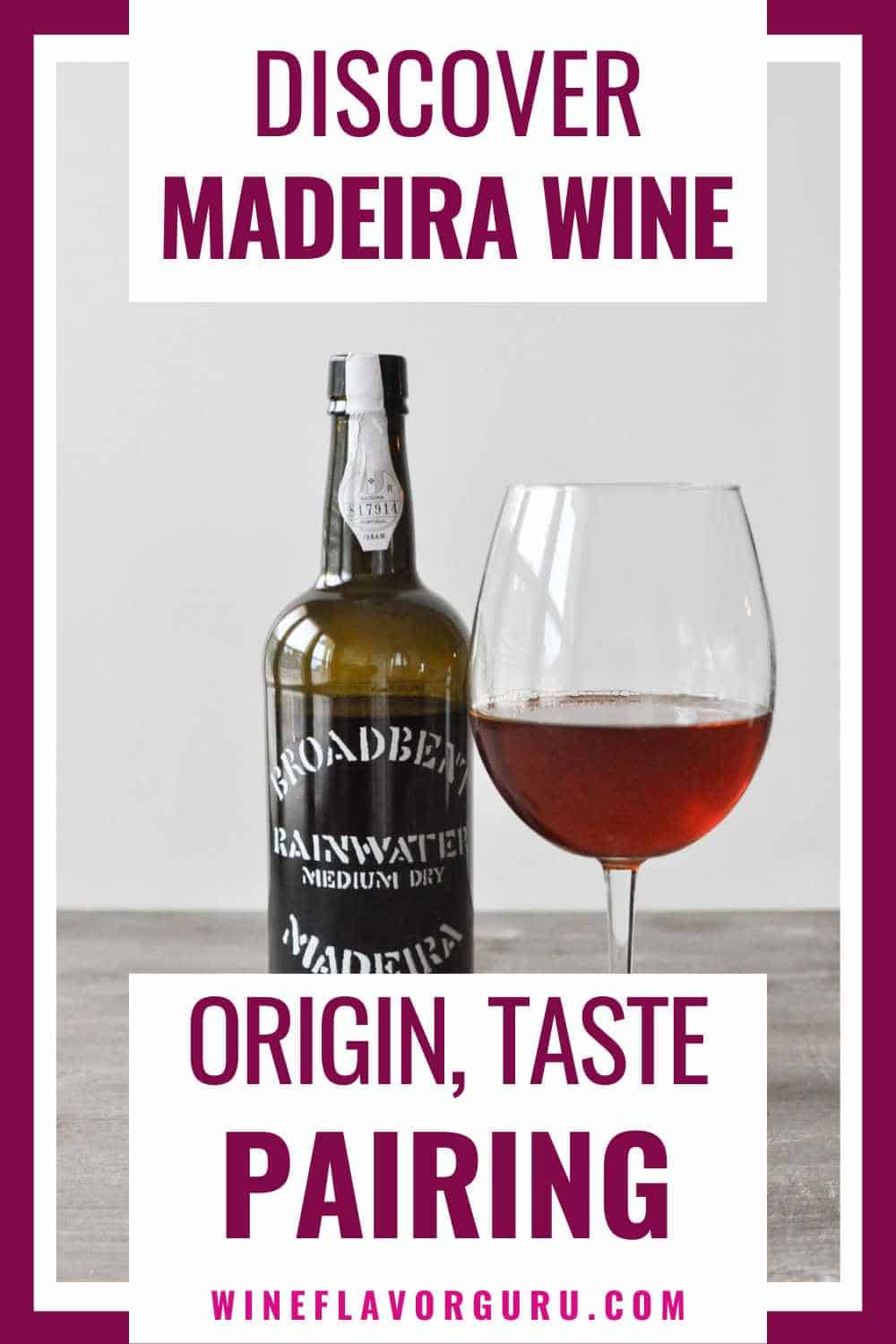One of the famous wines from the land of Portugal, Madeira takes the forefront regarding the island’s local varieties. If you are interested in this blend of sweet, bold, and acidic wine, let’s get into what is Madeira wine.
What is Madeira Wine?
| Origin | Madeira, Portugal |
| Commonly made with | Tinta Negra Mole |
| Color | Ranges from light golden to deep amber or brown |
| Taste | Bold to Sweet |
| Texture | Dry to Sweet |
| Sugar Content (per liter) | 10 to 120g |
| ABV | 15 to 22% |
| Biggest Producers | Portugal |
Madeira wine is one of the most recognizable local beverages from Portugal. The wine’s long and thorough fermentation is known for its rich and bold taste.
As a fortified wine, certain spirits, such as brandy, are present during the aging process of the wine. In turn, Madeira has a high amount of alcohol at around 18 to 20%, away from the regular 12% from wines.
Depending on the type, Madeira wine varies vastly in taste and texture. Some tend to have higher sugar content, while others can be dry.
While Madeira wine is also used in French cuisine, it is more traditionally associated with Portuguese and British culinary practices. It’s a prevalent fixture in many French recipes due to its rich taste and high acidity. In England, the Madeira cake that uses this wine is very popular.
It also serves as an excellent pre-meal and after-meal wine option. Depending on the type of Madeira wine, they can serve different purposes.
How is Madeira Wine Made?
Madeira has the same process as many other fortified wines, such as Port and Sherry. As most of these wines are present in hotter climates, aging through heat is necessary.
As a start, a local Portuguese wine grape Tinta Negro Mole is the most common variation for Madeira wines. Cultivating the grapes through machinery is challenging due to the steep and rugged terrain of the island, despite its mix of tropical and oceanic climates.
The terrain of the island proves to be too much for machinery. The cultivation and harvesting of Negro Mole are only done by hand. The labor-intensive work leads to a limited amount in the region and higher prices.
As a fortified wine, the presence of alcohol during fermentation is a given when it comes to Madeira wine. In the olden times, distilled alcohol from sugar cane was the primary alcohol for the winemaking process. However, the prevalence of brandy brought it to the forefront of modern Madeira.
After the wine grapes are pressed and put into the barrels, Madeira wine will start deviating from the typical winemaking. The big difference is the presence of heat. There are two primary processes when making modern Madeira wines: estufagem and canteiro.
Estufagem is among the cheapest and most popular ways of aging Madeira wine. The temperature is set to 45 to 55 degrees Celsius by using artificial means of heat. The barrel is run through the heat for around ninety to over a year.
Canteiro, on the other hand, ages the wine through natural means. It uses the island’s naturally hot climate, leading to an extended aging period of around five to hundreds of years. The result is a higher quality Madeira wine sought after by many.
Most modern and cheaper Madeira wines are run through the Estufagem process. It’s a lot easier to do and much more inexpensive labor-wise.
History of Madeira Wine
The birth of the Madeira wine stems from the voyages during the olden times. As the Age of Exploration became prevalent in Europe, the exchange of products also went with it. Although wine is a top-rated product from Madeira, it tends to spoil during its trip to the sea.
Fortunately, winemakers discovered that adding alcohol and fortifying the drink leads to less spoilage. It also helps the wine to survive longer and be edible even with roundtrips.
Due to its unique aging process, unopened Madeira wine can last hundreds of years without spoiling. As long as certain winemaking conditions are met, you can enjoy Madeira safely, even if it was made long ago.
Due to wars, Madeira wine saw a downturn during the 20th century. Since most voyages don’t stop on the island of Madeira, the production and distribution of wine are also lessened. It’s the old image as a voyage wine starts to fall.
By the mid-20th century, Madeira wine was generally considered a cheap cooking wine. However, during the 1990s, the Madeira brand focused on bringing wine to the forefront again.
These days, Madeira still stands as one of the most popular imports from the islands. It earns its way to countless tables and kitchens.
Taste and Appearance of Madeira Wine
Madeira wines tend to vary when it comes to taste and texture. However, its color seems consistent on the red and brown scale.
Depending on the variety of Madeira wine, it can have around 10 to more than a hundred grams of sugar per liter. There are four types of Madeira wine: Sercial, Verdelho, Boal, and Malvasia.
Serial and Verdelho are both low in sugar but higher in acidity. When it comes to cooking and aperitifs, these two are the leading candidates. It offers a nice blend of bold flavors and comes off a lot cheaper.
The Sercial and Verdelho, being aged for a shorter period, typically show lighter golden hues, while Boal and Malvasia, which are aged longer, exhibit deeper amber colors.
Boal and Malvasia tend to be a lot sweeter and perfect for digestifs. Although there are deep grape flavors, the increase in sugar is apparent with every sip. They are considered excellent dessert wines.
There is an older label known as Terrantez. However, it has grown unpopular throughout the years. It’s a sweet blend between Boal and Verdelho.
Even though some Madeira wines have higher sugar content, it does not defy its known acidic, dry finish. Even the Malvasia still has a bold finish despite being the sweetest type of Madeira.
How to Drink Madeira Wine
Madeira wine can vary from each other. However, one thing is sure: you will enjoy every sip. If you don’t know where to start, here are some tips, such as:
Let the Wine Breathe
When it comes to Madeira wine, a more extended aging period is required. By letting the wine breathe, you can minimize the pungent flavors in the glass. Using a standard glass of wine will significantly help with the aeration of the wine.
This mellows out the aroma and leads to a purer flavor. You can taste the different notes better when the wine blends with oxygen.
Try Cheese and Desserts
Although it’s much more common to enjoy Madeira wines after a hefty meal, drinking it with cheese and desserts can also be great. The bold and acidic taste of the wine will help you enjoy your delicious appetizers more.
Although it might sound redundant, sweet types such as Boal and Malvasia are also great with desserts such as chocolates and ice cream. Since Madeira wines are acidic, the balsamic flavors do not kill the flavors of the dessert.
The wine’s acid serves as an excellent flavor enhancer. It’s also the reason it’s a known ingredient for desserts such as Madeira cake.
Madeira Wines You Should Try
If you are new to Madeira and do not know where to start, here are three selections you can try. Ranging from dry to sweet, bold, and acidic, you can find a bottle that will suit your taste.
1. N.V. Barbeito 40 Anos Years Old Boal
When it comes to Madeira wines, the Barbeito brand is at the forefront. This 40-year-old vintage bottle encapsulates what makes the old Boal brew so special. The taste meddles between hints of oak, nutmeg, and a strong kick of acidity.
A sip from this Boal wine is a perfect way to end your meal. Like most Boal wine, this also serves as a digestif due to its acidity and tangy taste. It serves as an ideal blend between bold flavors and sweeter Madeira wine.
2. N.V. Blandy’s Verdelho Madeira
One of the Madeira classics, Blandy’s, is long in the winemaking game. If you are more into a dry and sweet blend, Blandy’s Verdelho is here for you to try out.
With some of these vintage bottles in the oak since 1979, you can ensure bold flavors of honey, nuts, and leather notes. It’s a perfect pre-meal or dessert wine with a good blend of acid and sweetness.
3. N.V. Henriques & Henriques Malvasia 20 Years Old Madeira
For a sweeter blend, Henriques’ Malvasia is an excellent starter. Coming from a 20-year-old oak, you can ensure a higher sugar content. Its acidity and pungent flavors are also provided with every sip.
It has strong notes of long aging, along with dried fruits, chocolate, and vanilla. This Madeira is a perfect option if you are a fan of oaky and fruit notes.
In Summary
Madeira wine offers a blend of bold and sweet flavors and an excellent balsamic flavor. We hope this comprehensive overview of Madeira wine helps you know more about this significant part of winemaking.

George Moore, co-founder of Wine Flavor Guru, is a charismatic entrepreneur with a rich background in California’s wine industry. Alongside Sylvia, he transformed a Sonoma County vineyard into a source of premium wines. George’s expertise in sourcing exceptional grapes and his approachable style make wine appreciation both accessible and engaging.
